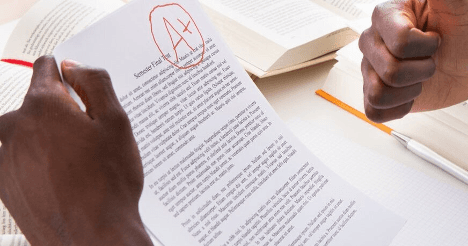Osaka Jogakuin University (OJU) uses bilingual education, a content-based approach to English as a Foreign Language (EFL). Thus, one of the sophomore courses is Theme Studies, for discussion and academic paper writing, with a semester topic selected by each teacher.OJU was first in the world to have all students use iPods, before Duke University in 2004.Since 2012, all students now use iPads, for the purpose of accessing e-books and the Internet during class via wi-fi. As such, students were ready to learn online when all classes plunged into emergency remote teaching.
When asking students whether they would prefer to submit papers on paper or online, all students chose the latter route, highlighting the flexibility and desire of many students to pursue online as a primary mode of learning.This desire was bolstered by the fact that OJU was using the Moddle learning management system (LMS) since 2004 for blended learning, so the students already knew how to submit papers easily online.
This method is described in detail below:
Opening the class Excel file on my computer, I copy the email address of the student whose MSWord file I open, and lastly enter their grade in Excel. On the email subject line, I paste Feedback on your [first, etc.] Reflection and Response [or other] Paper. Starting the body of the email, I paste Grade out of 10 points:, Comment:, and Problem areas: on three lines. I type feedback and paste the problem areas from the Rubric below.
A rubric often shows the grading weight of different aspects, but more importantly it shows students what the important priorities are. Since our approach is content-based, correcting all the English is not emphasized, and would require the time-consuming comment function of MSWord to do online. Moreover, since we cannot be sure to what extent students may use the disruptive technology of automatic translation from their native language, I make general comments about their English and use my judgment on their grade from long experience rather than adding up points from an inflexible Rubric.
The following type of paper may be useful at various school levels for English native speakers as well. For a five-paragraph Reflection and Response Paper of about 300 words, I hand out a short but academic article on the class topic, to which all students respond, which is fairer to grade than what each student might find. In a Reflection and Response Paper, students are to summarize the reading, connect the content to their own experience, and write what they think about the article and why. In a brief paper, students can practice various English writing skills and reasoning, while finding it interesting because they get personally involved through their memories and free opinions.
Feel free to adapt this rubric for [Summary,] Reflection and Response Papers. Some Japanese language and specifics are omitted in this version. The complete Rubric is passed out to students before writing their first paper and serves as a guide. It asks students at first to study the feedback, do better on future papers, and ask any questions in class or by email. These are mainly the items that can be copy-and-pasted to show the problem areas, while they also show the necessary and important elements of an academic paper:
Reflection and Response Paper Rubric
Format – [APA style and format in our case, explained in an e-book on their iPad].
English composition and accuracy: It must be your own writing without copying or translating. It is OK to make mistakes if you do your best to communicate your meaning.
Content: Read the assigned article carefully, think about it, and communicate your own ideas. Your paper should be more than one page.
Paragraphs: Always write in paragraphs, not too short or too long.
Parts of a Reflection and Response Paper
Title (centered): Your own unique title that tells about your whole paper.
Paragraph 1 – Introduction to your whole paper: the topic, limited scope, and purpose.
Paragraph 2 – Summary of the main points of the assigned reading in your own words. Show your understanding of the whole reading.
Paragraph 3 – Reflection: connecting the reading to your own life experiences.
Paragraph 4 – Response: what you think about the main ideas in the reading. Add your own ideas about the topic.
Paragraph 5 – Conclusion.
The Summary, Reflection, or Response can be more than one paragraph. Start a new paragraph whenever you change the topic or take a different approach.
Citations and References – [Look up the format for the type of publication in the guide suggested by the teacher].
About the author: Steve McCarty is a longtime Professor in Japan, lecturer for the Japanese government international agency, and World Association for Online Education (WAOE) President. See his highly cited works online starting fromhttps://japanned.hcommons.org.For more tips and best practices in Online Education, please contact Steve McCarty and the World Association of Online Education on their website at https://www.waoe.org/index.html.





